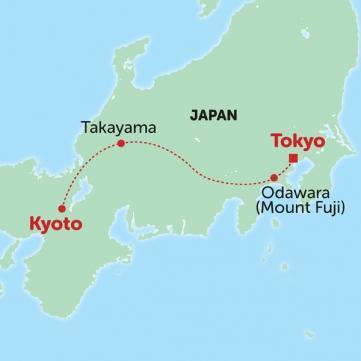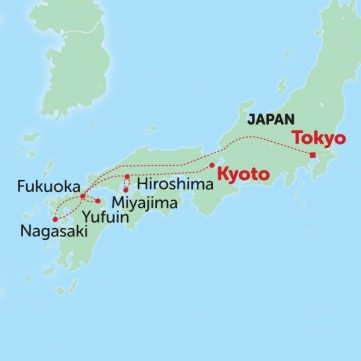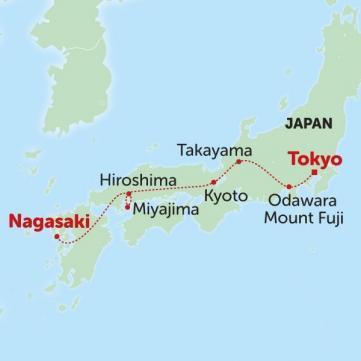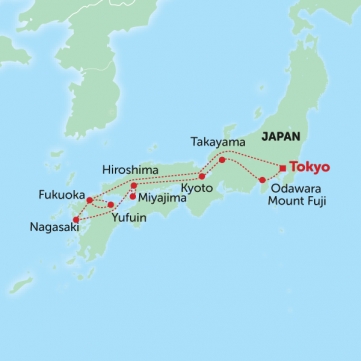Book NOW for $1 £1 €1 • Flexible Payments • No Change Fees • Private Departures Available
- Home >>
- Best time to visit Japan
The weather
in Japan
Unlike other destinations in Asia such as Thailand or Sri Lanka, Japan has four seasons which make it a great time to go all year depending on what you are looking for with your Japan holiday.
Travellers to Japan will find that spring and autumn will have the most pleasant weather, with most days being warm and dry. During summer Japan can get very hot, especially in the bigger cities.
Did you know?
Japan has more than 1500 earthquakes every year!
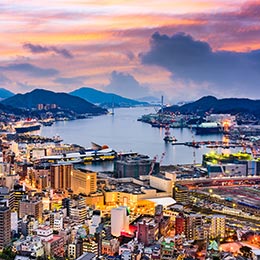
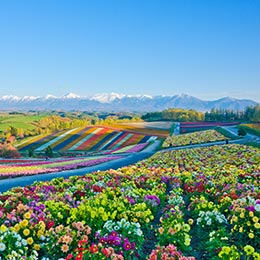
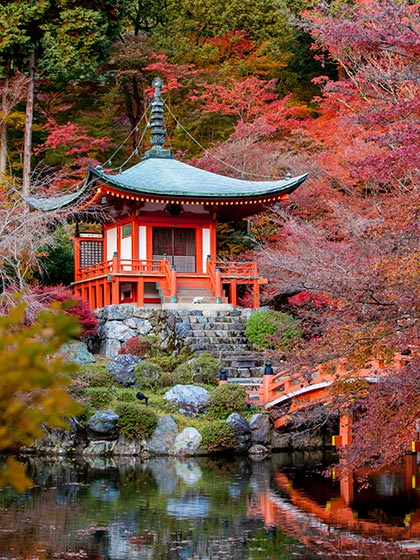
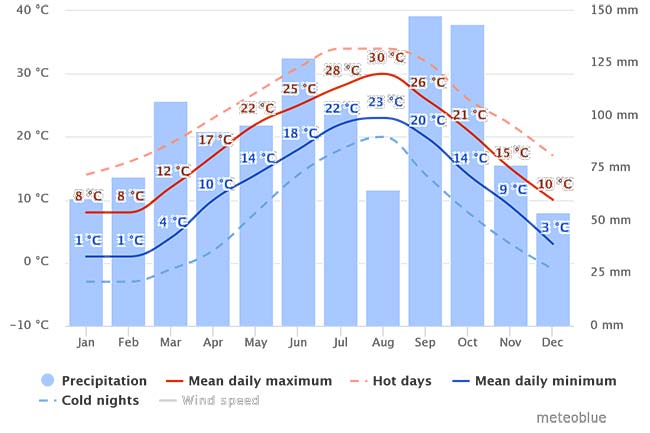
Best time to visit Japan
Many visitors to Japan will be heading to the main island of Honshu. This is where Tokyo and Osaka are based. To beat sticky and humid temperatures, travelling in spring between March-May or autumn from September-November is ideal. These months also coincide with the picturesque ‘sakura' (cherry blossom season) and ‘koyo’ (autumn leaves) making it ideal for those postcard-perfect photos of Japan. During the winter months it can be a lot colder with snowfall especially in the higher altitude regions such as Takayama.
Prefer beach time? Head to the Okinawa Islands situated in the southernmost point of Japan. They are much more similar to other tropical regions of Asia and stay mild during winter. Summer is hot so make sure you head to the beach to cool down.
If you are visiting the eastern parts of India such as Kolkata, it's best to go between October and January. The western side (around Goa and Mumbai) is best visited from October to May to avoid the rain, however it is warm all year round.
Festivals & events
in Japan
In Japan, festivals are known as ‘Matsuri’ and many of these are based on the seasons. Some of them are extremely traditional with their roots dating back from ancient Chinese cultures and many vary from region to region. Japan is a great destination all year round but during one of the below festivals, the display of colours on show is unparallelled.
Sakura - Cherry
Blossom Season
All over Japan!
(March-May)
Travellers flock to Japan to see the sakura in full bloom. Cherry blossom can vary depending on the year but it often is between March and May, with each region of Japan differing slightly. It generally starts in the south of Japan before heading north. The Japanese treat sakura as a celebration, holding ‘Hanami’, spectacular cherry-blossom viewing parties.
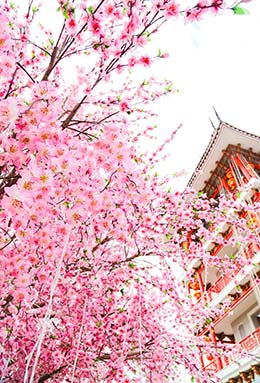
Gion Matsuri
Kyoto
(July)
Kyoto’s geisha district, Gion comes alive during Gion Matsuri. Dating back since 869, the festival celebrates the Yasaka Shrine. It occurs all throughout July but one of the main highlights to see is the float procession on July 17th known as Yamaboko Junko. The floats used are extremely impressive, some standing as high as 25 metres.
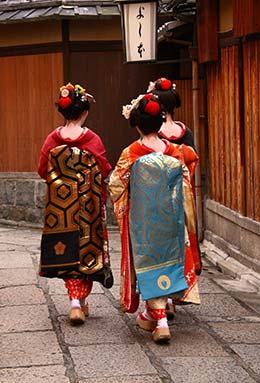
Takayama Matsuri
Takayama
(April and October)
One of the most popular festivals in Japan, the festival of Takayama is held twice a year to celebrate spring and autumn. The Spring Festival in celebration of the Hie Shrine is held in April and is located in the southern half of the old town in Takayama. The Autumn one is held in October for the Hachiman Shrine. You can expect to see beautiful floats which are ornately decorated. If you travel out of festival period you can see replicates in the festival museum of Takayama.
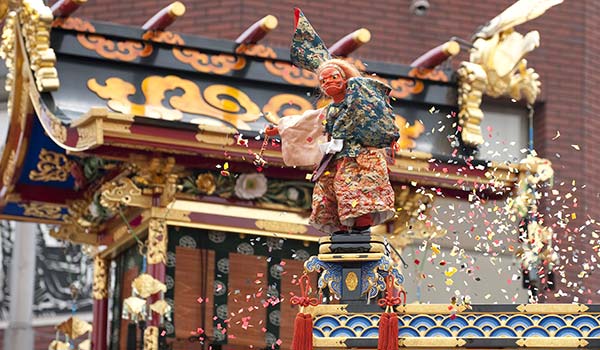
Sapporo Snow
Festival/Yuki Matsuri
Sapporo
(February)
Held for one week in February, the Sapporo Snow Festival is a highlight of Hokkaido. The northern island is famous for its winter sports and during this week winter is celebrated in a big way, with beautiful ice and snow sculptures at three different sites within the city. Head to Odori Park for the main site, where alongside ice and snow sculptures, there are various stages hosting performances.
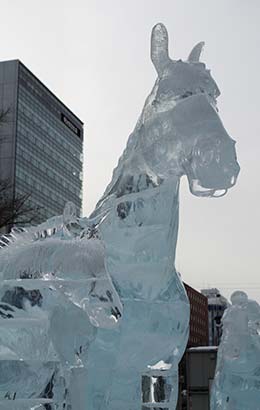
Nagasaki Lantern
Festival
Nagasaki
(Early February)
Nagasaki has a fantastic Chinatown and this festival was started by its residents to celebrate the Chinese New Year at the end of January. Over 15,000 Chinese paper lanterns are spread throughout the city centre, especially within the Chinatown district. There are also several events running within the period from dance performances to procession - keep an eye out on your visit!
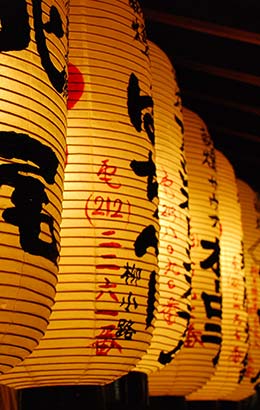
Awa-Odori Matsuri
Tokushima City
(12-15th August)
Dance is the pinnacle of this festival held in August in Tokushima City. The festival dates back for 400 years and is known as the ‘Fools Dance’. Similar to Rio Carnival there is a large parade where dance groups follow in a precession through the streets of Tokushima. Each group will have different uniforms, many performing with Japanese instruments as they go. It is a vibrant, colourful affair which attracts hundreds of visitors each year.
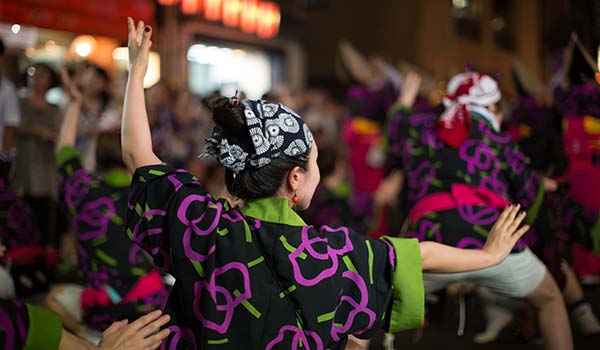
Kanda Matsuri
Tokyo
(Mid May only in years with odd numbers)
One of the most important festivals in Tokyo, Kanda Matsuri is celebrated in the week around May 15th but only during years with odd numbers. It began during the Edo Period under the rule of the Shogun. It celebrates the prosperity of people and is centered around Kanda Myojin Shrine with procession and parades during the weekend.
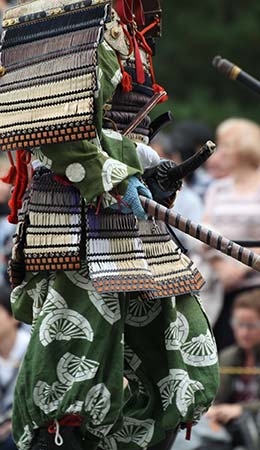
Golden Week
All over Japan!
(end of April to the beginning of May)
Not just one specific festival, Golden Week is a large public holiday that consists of four national holidays. It is typically a time when the Japanese take leave from work and famous sites, trains and restaurants become much more busy. The four festivals that incorporate Golden Week is Showa Day (April 29th) which was the birthday of Emperor Showa, Constitution Day (May 3rd), Green Day (May 4th) which celebrates nature and the environment and Children’s Day (May th) which celebrates boys and young men.
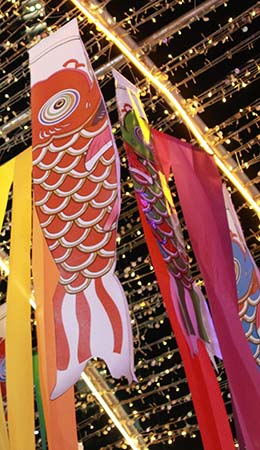
Hakata Dontaku Matsuri
Fukuoka
(3rd and 4th May)
Held during the aforementioned Golden Week, the Hakata Dontaku Matsuri dates back to 1179. It is located primarily at Hokata Port where there is a ceremony, parade and other festivities. The parade occurs on the 4th of May where dancers, performers and musicians line the streets. If you happen to be in Fukuoka while this occurs keep an eye out for people banging “Shamojis” - wooden spoons used for rice.

Tenjin Matsuri
Osaka
(24th and 25th July)
In celebration of the Tenmangu Shrine this festival in the city of Osaka is celebrated both on land and on water! There is a beautiful procession heading towards the Okawa River where boats are waiting to continue the parade on water. It comes to an end in the evening with a fantastic firework display.
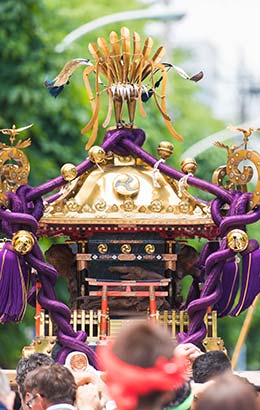
Shogatsu
All over Japan
(New Year -January 1)
New Year is celebrated in a big way in Japan with the festival of Shogatsu. Although it is held at the same time as the Gregorian Calendar it has similarities to Chinese New Year - money is given to children and traditional food is made. Soba noodles are traditionally eaten at midnight in preparation for health and prosperity for the year ahead. In Tokyo, the doors of the inner grounds of the Imperial Palace are opened to the public. Hear the Emperor will appear on the veranda to send his New Year greetings.
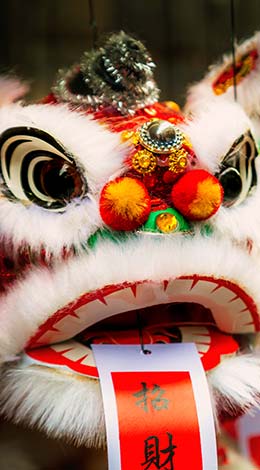
Other public holidays to be aware of when planning your trip to Japan
- Coming of Age Day- 14 Jan
- National Foundation Day- 11 Feb
- Vernal Equinox Day - 21 March
- (Golden Week) Constitution Memorial Day- 3rd May
- (Golden Week) Greenery Day - 4 May
- (Golden Week) Children’s Day - 6 May
- Marine Day -15 May
- Mountain Day - 12 Aug
- Respect for the Aged Day - 16 Sept
- Dussehra - Oct 8 (dates may vary)
- Autumnal Equinox Day - 23 Sept
- Eid-Milad-un-Nabi - Nov 9 - 10 (dates may vary)
- Health and Sports Day - 14 October
- Culture Day - 4 Nov
- Labor Thanksgiving Day -23 Nov
Featured Tours





